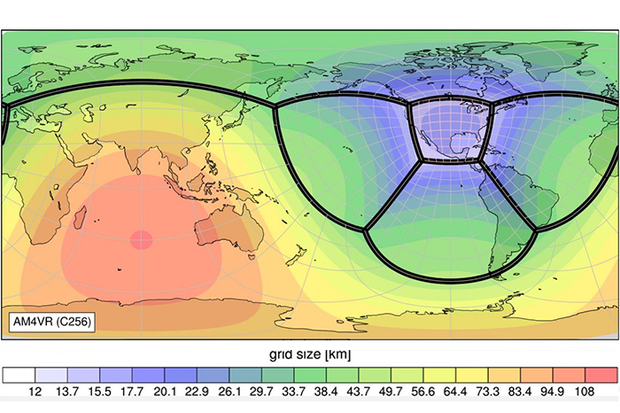A new variable-resolution global chemistry-climate model for research at the nexus of US climate and air quality extremes

The new model is a seamless system that can provide detailed information over a targeted region, while still integrating the global Earth system components. Credit: doi:10.1029/2023MS003984
In the U.S., air pollution includes contributions from multiple local human and natural sources, as well as transported sources like wildfire smoke from Canada, dust plumes from Africa, and intercontinental pollution from Asia. Accurate projection of future climate and air quality at scales relevant to local and regional stakeholders requires a seamless modeling system that can provide detailed information over a targeted region, while still integrating the global Earth system components in a computationally efficient manner. Scientists at GFDL have developed a novel variable-resolution global chemistry-climate model, known as AM4VR, for research at the nexus of U.S. climate and air quality extremes.
In contrast with the global models contributing to the latest Intergovernmental Panel on Climate Change Report, this model features more than 10 times finer spatial resolution over the contiguous U.S., allowing it to better resolve cities, mountain valleys, thunderstorms, and urban-to-rural air quality variations. The model features much improved representation of regional rainfall extremes, drought, haze and wildfire smoke, and ozone air pollution extremes in diverse U.S. air basins, including California.